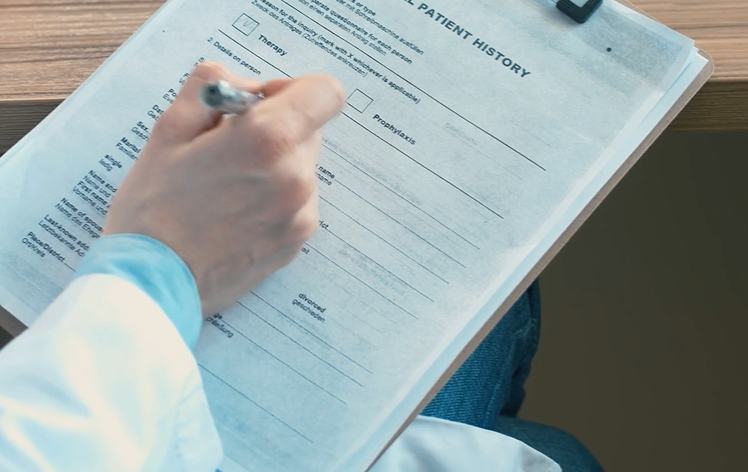Borderline Personality Disorder (BPD) is a multifaceted mental health condition, a labyrinthine puzzle characterized by emotional instability, impulsive behavior, and often volatile relationships. This disorder presents a complex clinical challenge, requiring a nuanced approach to diagnosis and treatment.
In this comprehensive article, we will embark on an analytical exploration of the various aspects of the Borderline Personality Disorder test. With a keen focus on methodologies, its importance in the mental health landscape, relevant statistics, and the current state of research, we seek to provide an intellectual foundation for professionals and those interested in this compelling subject.
Definition and Prevalence
Borderline Personality Disorder is a severe mental health disorder marked by a pattern of ongoing instability in moods, behavior, self-image, and functioning. It affects approximately 1.6% of adults in the general population.
Symptoms
The following table outlines the main symptoms and their prevalence:
| Symptom | Prevalence (%) |
|---|---|
| Emotional Instability | 80-90 |
| Impulsive Behavior | 75-85 |
| Unstable Relationships | 70-80 |
| Chronic Feelings of Emptiness | 60-70 |
| Fear of Abandonment | 65-75 |
(Source: Zanarini et al., 2008)
The Need for Testing
Due to the multifaceted nature of BPD and its overlap with other disorders, thorough testing is crucial. Misdiagnosis rates have been as high as 40% in certain populations.
Types of BPD Tests
- Clinical Interviews
- Questionnaires and Self-Report Measures
- Observational Measures
- Combination Approach
Testing for Borderline Personality Disorder (BPD) is a complex process that requires a sophisticated understanding of both the disorder itself and the methods available for its assessment. Psychologists follow a multifaceted approach to ensure accurate diagnosis, considering the often ambiguous and overlapping symptoms of BPD. Below is a detailed examination of how these tests are conducted.
1. Clinical Interviews

Structured Interviews
Psychologists often begin with structured interviews like the Diagnostic Interview for Borderline Patients (DIB) or the Structured Clinical Interview for DSM-5 (SCID-5). These provide a standardized set of questions designed to elicit specific information related to the diagnostic criteria for BPD.
Unstructured Interviews
Some psychologists prefer to use unstructured interviews, allowing a more free-flowing conversation. This approach can sometimes reveal information that might be missed in a more rigid, structured format.
Key Areas of Inquiry
During these interviews, psychologists explore areas such as:
- Emotional instability and mood swings
- Impulsive behaviors and their consequences
- The pattern and history of relationships
- Fears of abandonment and how these manifest in daily life
- Self-image and identity disturbances
2. Self-Report Questionnaires

Self-report questionnaires like the Borderline Personality Inventory (BPI) are often used as supplementary tools. These are standardized questionnaires that the patient completes, answering questions related to BPD symptoms.
Advantages
- Quick to administer
- Can provide a broad overview of symptoms
Disadvantages
- Reliance on patient’s self-awareness and honesty
- Potential for misunderstanding questions
3. Observational Methods
Psychologists may also observe the patient in various settings to assess behaviors, emotional reactions, and interactions with others. This method can provide insights into how BPD symptoms manifest in real-life situations.
4. Review of Medical and Personal History

A thorough review of the patient’s medical and personal history is vital to understand the onset and progression of symptoms. This includes:
- Previous mental health diagnoses
- Family history of mental health conditions
- Personal trauma or significant life events
5. Collaboration with Other Professionals
Diagnosing BPD often requires a collaborative approach, involving other mental health professionals, family members, or caregivers. This ensures a more comprehensive understanding of the patient’s behavior across different contexts.
6. Rule Out Other Disorders

Given that BPD shares symptoms with other disorders such as Bipolar Disorder and Complex PTSD, psychologists must carefully differentiate BPD from these conditions. This may involve additional testing or consultation with specialists.
Clinical Interviews
Techniques and Questions
These involve detailed, face-to-face consultations with mental health professionals. Standardized interviews such as the Diagnostic Interview for Borderline Patients (DIB) and the Structured Clinical Interview for DSM-IV (SCID-II) are widely used.
Challenges
- Trust-building with the patient
- Ensuring honest responses
- Differentiating BPD from similar disorders
Questionnaires and Self-Report Measures
Popular Tools
- Borderline Personality Inventory (BPI): Sensitivity of 85%, Specificity of 75%
- McLean Screening Instrument for Borderline Personality Disorder (MSI-BPD): Sensitivity of 81%, Specificity of 85%
Advantages and Disadvantages
The following table highlights the main advantages and disadvantages:
| Advantages | Disadvantages |
|---|---|
| Quick and Inexpensive | May not capture complexity |
| Easily Administered | Relies on patient honesty |
| Standardized Scoring System | Potential for misinterpretation |
Observational Measures
Behavior observation helps in assessing the real-time behavior of the patient in various scenarios. Although more time-consuming, this approach offers insights that self-reports might miss.
Combination Approach
A blend of interviews, questionnaires, and observations is considered the gold standard in BPD diagnosis. This approach allows for the comprehensive evaluation necessary to differentiate BPD from other similar disorders.
Treatment Implications
Importance of Early Diagnosis
Research indicates that early diagnosis leads to better outcomes in BPD patients, with a decrease in symptoms by nearly 50% after two years of targeted therapy.
Treatment Options
- Dialectical Behavior Therapy (DBT): Found to be effective in reducing self-harm and suicidal tendencies.
- Medication: Though no specific medication is approved for BPD, various medications can manage particular symptoms.
FAQs
Why is testing for BPD so complex, and what methodologies are used in the diagnostic process?
Testing for BPD is complex due to the multifaceted nature of the disorder and the overlap of its symptoms with other mental health conditions. Psychologists utilize a combination of methodologies, including structured and unstructured clinical interviews, self-report questionnaires, observational methods, review of medical and personal history, and collaboration with other professionals. This comprehensive approach ensures a more accurate diagnosis.
Can self-report questionnaires alone be used to diagnose BPD?
While self-report questionnaires like the Borderline Personality Inventory (BPI) can be valuable tools in the assessment process, they are typically not used alone for diagnosis. They are often part of a broader diagnostic approach that includes clinical interviews, observations, and medical history review. Relying solely on self-report questionnaires might lead to inaccuracies as they depend on the patient’s self-awareness and honesty.
How do psychologists differentiate BPD from other similar disorders like Bipolar Disorder or Complex PTSD?
Differentiating BPD from similar disorders involves a careful and systematic examination of symptoms, onset, progression, and the patient’s response to specific situations. Psychologists may also use specialized interviews and assessment tools designed to tease apart the differences. Collaboration with other mental health professionals and a thorough understanding of the unique characteristics of each disorder are vital in this differentiation process.
Is early diagnosis of BPD beneficial, and what are the treatment options after diagnosis?
Early diagnosis of BPD is crucial, as it enables timely intervention and support. Treatment options may include therapies such as Dialectical Behavior Therapy (DBT), Cognitive Behavioral Therapy (CBT), and medications to manage specific symptoms. A tailored treatment plan created in collaboration with mental health professionals can greatly enhance recovery prospects.
Can family members or friends assist in the diagnosis of BPD, and how?
Yes, family members and friends can play a supportive role in the diagnosis of BPD. Psychologists may involve them to gather information on the patient’s behavior in different settings and understand the history of symptoms.
Their insights can complement the information gathered through interviews and observations, providing a more comprehensive picture of the patient’s condition. However, professional evaluation remains central to the accurate diagnosis of BPD.
Conclusion
Borderline Personality Disorder is a complex mental health condition that requires an intricate understanding and nuanced approach to diagnose accurately. By employing a combination of clinical interviews, standardized questionnaires, observations, and considering the current state of research, professionals can make significant strides in the appropriate diagnosis and treatment of BPD.
The statistics and facts presented here emphasize the necessity of a structured approach to BPD testing, reflecting its critical role in managing and treating this intricate disorder. The journey towards healing those affected by BPD begins with the acknowledgment of its complexity and the dedicated pursuit of understanding through rigorous testing and compassionate care.

